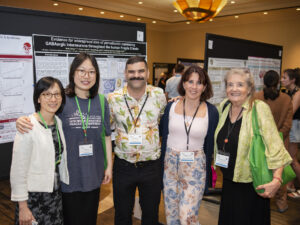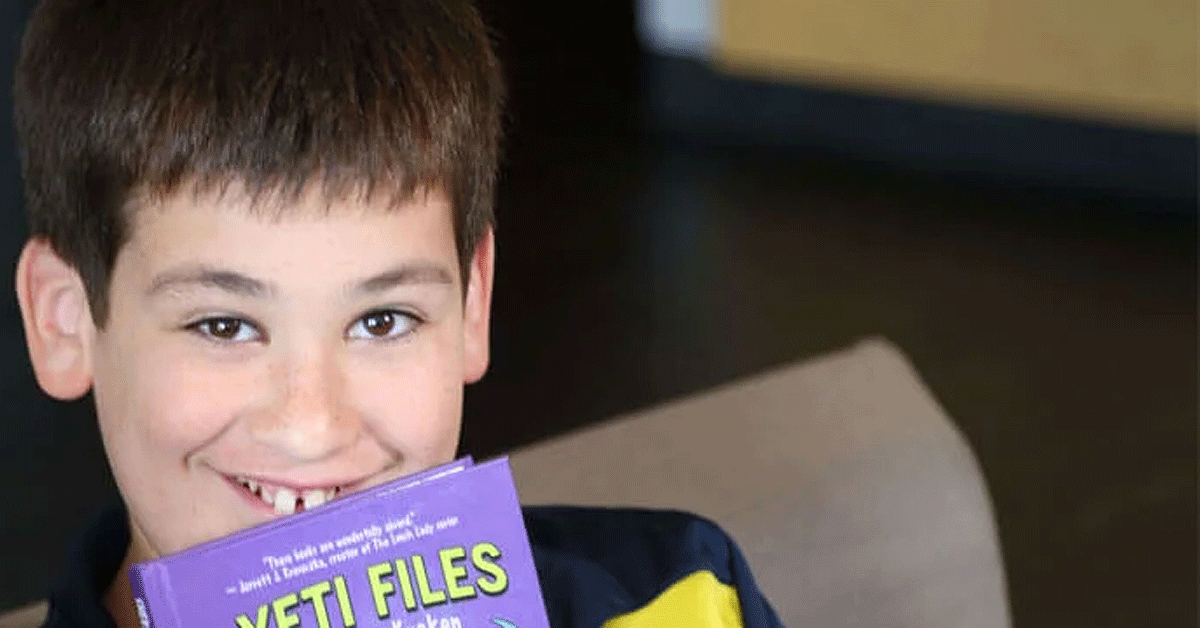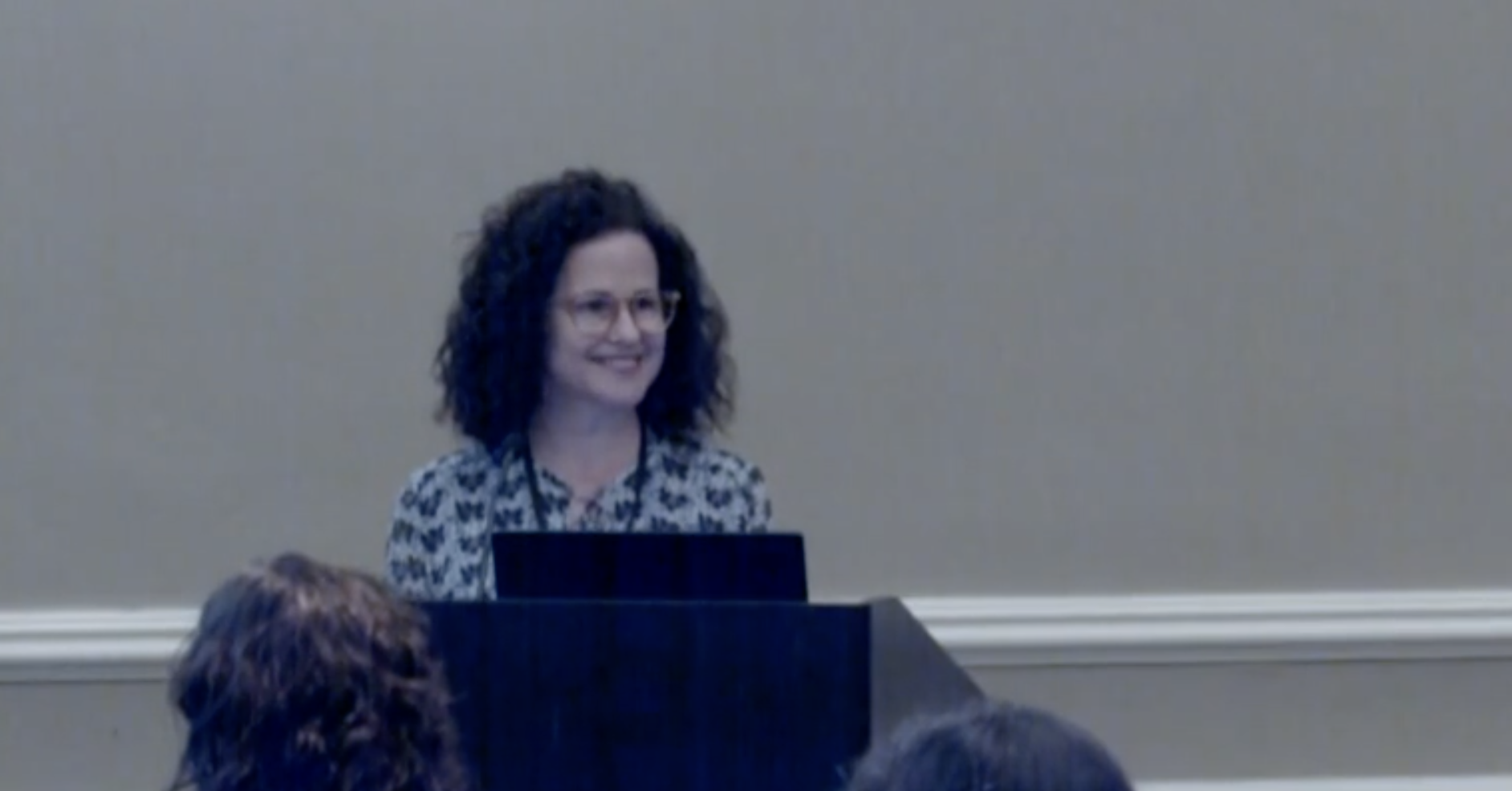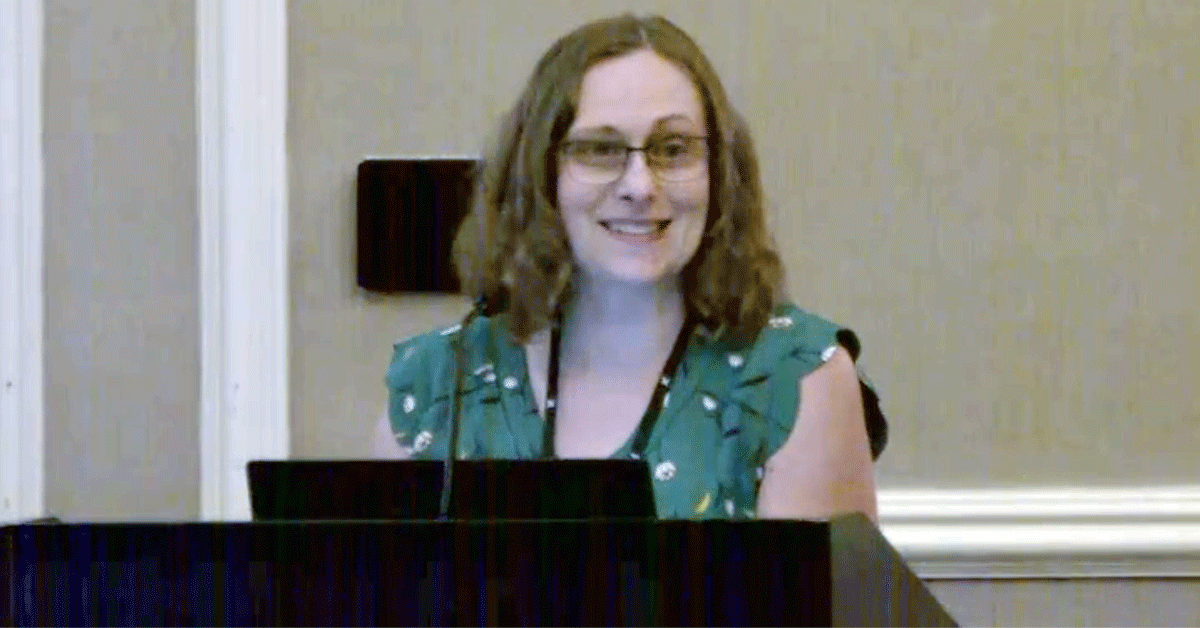Have you ever shopped in Berkeley? After your obligatory coffee at one of the city’s 10,000 cafes, you must try Shoes on Solano — they even accommodated Tracy’s size “43.” (U.S. size 12; oops, maybe shoe size is like age and shouldn’t be disclosed?). In any case, we were in the Berkeley area for a wonderful daylong conference on Fragile X syndrome arranged by the Northern California Fragile X Support Group — and what a day it was!
Randi Hagerman, Marcia Braden, the two of us, Scott Hall, and Allan Reiss were on the slate as presenters. How encouraging to hear Allan say:
“The number one issue in Fragile X syndrome is hyperarousal.”
We are always delighted when researchers echo what we find in our clinical work. We think that the hyperarousal issue, in all of its differing forms, is the single most critical aspect affecting learning and development in those affected by Fragile X syndrome. It is also the factor most therapists and teachers need specific information about.

We have been advocating comprehensive intervention for hyperarousal for 20-plus years, and we remember fondly the first time our work dovetailed with research information when Vicki Sudhalter and Rick Belser first published their findings on the clinical implications of hyperarousal in Fragile X syndrome.
Recently we’ve encountered many situations in which therapists are confused by how to address hyperarousal while implementing autism-oriented treatment. This is because hyperarousal intervention strategies appear counter to the direct nature of many autism interventions, or, teaching strategies.
We see this confusion in therapists across the country as they attempt to integrate treatments from the field of autism into their intervention for children with Fragile X syndrome, with or without autism. It is critical to integrate knowledge of hyperarousal into any intervention strategy and especially for those treatments that come from a tradition of autism intervention. My, this is a serious and strong cup of coffee!
We were recently asked to travel to New York for a consultation regarding a young boy with Fragile X syndrome and autism who attended a private school utilizing a strict applied behavior analysis, or ABA, approach. The school and family were frustrated, as was the boy. The boy’s mother had provided the school with copious amounts of information about Fragile X syndrome learning styles, hyperarousal, and how to adapt curriculum. Sadly, the school insisted on a strict ABA approach with absolutely no modifications for Fragile X syndrome, going so far as to state, “You can bring in anyone [meaning Fragile X experts] you want, but we are not going to change our program.”
While this is an extreme situation, the need for therapists and school intervention programs to understand the Fragile X syndrome learning style and the specific role hyperarousal plays in learning and development has never been more urgent. This article was originally written in 2006, but it’s even more so true today, as the blind application of autism-based intervention is widespread with little regard to the role of hyperarousal in reducing adaptive capacity.
We answer several emails or calls each week about how to adapt autism intervention for Fragile X syndrome. As the prevalence of such programs and strategies grows, so will the need for guidelines for adapting strategies to honor the core of the Fragile X syndrome learner. The “FX Max” was created to provide a tool to families, schools, and interventionists to assist them in keeping the focus on Fragile X first, or, as we like to say, “living the Fragile X way.”
The main problem with many autism-oriented approaches is that they fail to take into consideration the learning style of individuals with Fragile X syndrome, in which the main issue is hyperarousal. We know that the research community is exploring this issue empirically, as are we.
For now, the evidence from our many years of experience suggests the following key adaptations be made to any intervention approach, especially those from an autism tradition.
Key Adaptations to Intervention
In general, a discrete trial approach that utilizes mass trials will elicit hyperarousal and in turn shut down learning and language and elicit maladaptive behaviors. A discrete trial approach is a behaviorally based approach to teaching or therapy that includes a single cycle of a prompt-stimulus for an expected response, which is then reinforced.
Sometimes this cycle is repeated several times over in a single session — the mass trial approach. Each skill is systematically built upon based on the data. Our point with the mass trial approach is not to say that careful, systematic work isn’t vital to the therapy process. The ability to analyze behavior and learning is an inherent part of all therapeutic interventions. However:
We understand that children with Fragile X syndrome are incidental learners who easily become overwhelmed in the face of direct instruction that requires an immediate, face-to-face response. This is the exact nature of a discrete trial approach if it’s not adapted.
It’s critical to modify a discrete trial approach to avoid forced responding. Following the child’s lead, interest areas and indications of comfort/engagement are critical. We value tracking responses with careful data gathering, and have found a more relationship-oriented approach works best.
Sequential teaching, especially forward chaining methods (a technique that teaches the steps of a more complex behavior/skill by teaching the first step sequentially through the last step), is often employed in autism interventions and is directly counter to the Fragile X syndrome learning style.
Children with Fragile X syndrome have a simultaneous cognitive style. This means that they are “gestalt” learners who need to see and understand the “whole” and not the parts that add to a whole. They are keen observers who learn from seeing a whole process or skill that they can replicate through imitation.
Many autism intervention programs target social skill development, including improving social eye contact and social interaction with reinforcement for correct performance.
We know that children and adults with Fragile X syndrome make wonderful eye contact when their level of arousal and anxiety are minimized, allowing them to feel comfort in the social situation. Conversely, when they feel social pressure, their hyperarousal skyrockets, and skills such as greetings and shared gaze are sacrificed. Attempting to “train” social skills without regard for hyperarousal is ineffective at best.
Creating opportunities to settle and manage hyperarousal as the first step in a social interaction is much more effective; it allows the individual to demonstrate their social drive appropriately. Then utilizing any of the more relational approaches can be successful. We have experienced positive benefits from several of these strategies, including DIR/Floortime developed by Greenspan and Wieder, Early Start Denver Model by Rogers and Dawson, and Pivotal Response Training by Koegel & Schreibman, which are all easily adapted for Fragile X syndrome.
Note the key word: adapted. All therapists should customize their treatment plans specifically for Fragile X syndrome, regardless of the strategy and regardless of any dual diagnosis that the individual may have (such as Fragile X syndrome and autism, or Fragile X syndrome and ADHD, etc.). Remember, they have Fragile X syndrome first and foremost, so it should lead the way.
Hyperarousal can produce some troubling or simply annoying behaviors in children and adults with Fragile X syndrome. These could include hand-flapping and biting, poor eye contact, and perseverative speech and motor activities. Autism treatment programs typically target these behaviors and attempt to shape/change them.
Again, we know it’s better to manage the hyperarousal that leads to the behaviors instead of struggling to change behaviors that are produced from the biology of hyperarousal. As our dear colleague Karen Riley always says, “You can’t battle biology.” This is a take-home message for adapting autism-oriented interventions.
Related Webinars
July 16, 2025
00 h 51 m
Dr. Deby Barbouth explores evidence-based lifestyle choices, mind-body techniques, and more to enhance well-being for women with the Fragile X premutation.
July 16, 2025
01 h 07 m
Rebecca Shaffer leads two presentations about how to stay calm and manage intense emotions. The first is for self-advocates, and the second is for caregivers of individuals with Fragile X syndrome.








